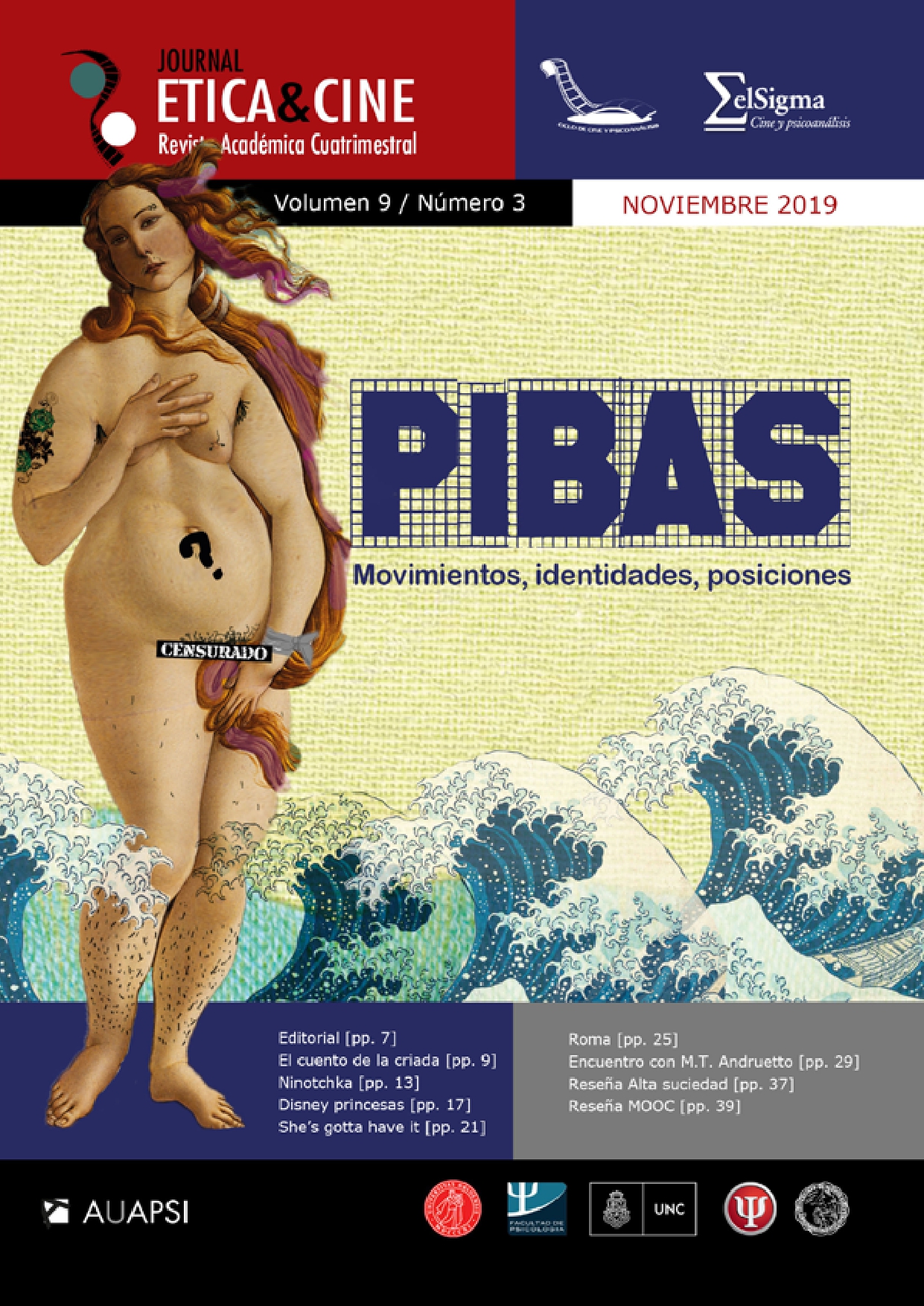She’s gotta habit
DOI:
https://doi.org/10.31056/2250.5415.v9.n3.26802Keywords:
Identity, Brooklyn, Lee, Body, African American, PsychoanalysisAbstract
In 2017, the audiovisual content platform Netflix presents She’s Gotta Have It, a story based on the Spike Lee film filmed in 1986, both of them share the name and the director. We will work some questions of the first season that consists of ten chapters, of approximately thirty minutes each, with an adapted script. Nola Darling returns; black woman, activist and artist who lives in Booklyn, and finds herself permanently searching her own identity. In this journey, her aspiration in the profession and the events that name her as a woman coincide. Nola resists all alienation to a name, and it is sustained by multiplying the others that it invents. This solution is not enough when it comes to addressing the real traumatic event. The
director shows us the contrast between a neighborhood full of identity references, with its images, its films, its discs and a woman who idealizes the feminine black form, to the point that whenever something represents it, it is not. In the Rashomon (Jingo, 1950) mode everyone looks at it from a perspective, but there is no finished form. Nola knows that there Woman does not exist, but believes in her and creates a way to make her exist, without naming her, without being her.
Downloads
References
A. A. (10 de Diciembre 2017). Volver a tenerlo. Radar-Página 12. Recuperado de https://www.pagina12.com.ar/81406-volver-a-tenerlo
Bruckner, D. J. R. (8 de agosto de 1986). Film: Spike Lee’s She’s gotta have it. New York Times. Recuperado de https://www.nytimes.com/1986/08/08/movies/film-spike-lee-s-she-s-gotta-have-it.html
Freud, S. (1920-1922). Psicología de las masas y análisis del yo. Obras Completas. Libro XVIII. Buenos Aires: Amorrortu Editores.
Hurston, Z. N. (1937). Their eyes were watching God. Estados Unidos: Little, Brown Book Group.
Jingo, M. (productor) y Kurosawa, A. (director). (1950) Rashomon [cinta cinematográfica]. Japón: Daiei.
Lacan, J. (1962-1963). La Angustia. El Seminario. Libro 10. Argentina: Paidós.
Lacan, J. (1971). De un discurso que no fuera del semblante. El seminario de Jacques Lacan. Libro 18. Buenos Aires: Paidós.
Lacan, J. (1972-1973). Aun. El seminario de Jacques Lacan. Libro 20. Buenos Aires: Paidós.
Lee, S. (productor) y Lee, S. (director). (1986). She’s gotta have it [cinta cinematográfica]. Estados Unidos: 40 Acres & A Mule Filmworks.
Lee, S. y Lee, T. L. (productores). (2017-2019). She´s gotta have it [serie de televisión]. Estados Unidos: 40 Acres & A Mule Filmworks.
Miller, J. A. (2006-2007). El ultimísimo Lacan. Los cursos psicoanalíticos de Jacques-Alain Miller. Buenos Aires: Paidós.
Downloads
Published
How to Cite
Issue
Section
License
Los autores que publiquen en Ética y Cine Journal aceptan las siguientes condiciones:
Los autores/as conservan los derechos de autor © y permiten la publicación a Ética y Cine Journal, bajo licencia CC BY-SA / Reconocimiento - Reconocimiento-CompartirIgual 4.0 Internacional. La adopción de esta licencia permite copiar, redistribuir, comunicar públicamente la obra, reconociendo los créditos de la misma, y construir sobre el material publicado, debiendo otorgar el crédito apropiado a través de un enlace a la licencia e indicando si se realizaron cambios.

Este obra está bajo una licencia de Creative Commons Reconocimiento-CompartirIgual 4.0 Internacional.




